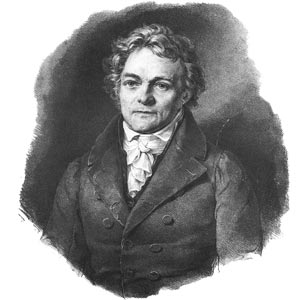This week we wanted to celebrate all things
We’re firm believers in that old saying ‘how do you know where you’re going unless you know where you’re coming from?’ so we decided it was time to find out more about the history of lithographic printing.
We dug out our history books, stuck on the kettle and settled in for some reading. The result? Our own little lithography timeline, enjoy!
1795-98: It all begins with laundry.
The star of our little story is Alois Senefelder, a well-regarded German playwright. Senefelder was struggling to make a living from his plays because creating copies was both a lengthy and expensive process. Then one day in 1795, his mother asked him to write a laundry list. Out of paper, he scribbled down the list on a limestone block using a grease pencil. He soon realised whatever he drew on the stone in the grease fluid would repel water whilst the stone would hold it. So by first wetting the stone and then applying ink, which stuck to the pre-applied grease, he could recreate an image again and again. Thus, lithographic printing was born.
1817: The first litho press
In 1817 took his experimenting to the next step, designing the very first litho press. The flatbed press automatically dampened and inked the plate, making the whole process much faster.

1837: Life in colour
In 1837, Frenchman Godefroy Engelmann patented his method of colour printing, known as chromolithography. Using the lithographic method of printing, he created his images by inking the plates with different coloured inks (blue, magenta, cyan and black) and then applying these inks one after the other to the sheet substrate. By overlaying the different inks, Englemann was able to create a multi-tonal, colour image. This discovery marked a giant leap forward for modern day lithographic printing, and we still use this basic process today.
1843 From flat to round presses.
1843 saw the invention of the first lithographic rotary printing press, built by Richard March Hoe. With a rotary press the image is placed on a revolving metal cylinder instead of a flatbed, which made the printing process much faster.
1871: The rise of the machines
By 1871 the word was out. By this time in the U.S alone there were more than 450 hand operated litho presses in use. As the popularity of Senefeder’s legacy continued to grow, people continued to experiment with and improve the process.
1880-1904: From Rotating to offset- Refining the process.
Between 1880-1904 Robert Barclay invented and continually developed the first offset lithographic printing press. The popularity of the direct rotary press had been suffering for a while due to advances in letterpress printing. The main problem was the continual pressure of plate on substrate eventually caused the image to wear off the plate. With Barclay’s offset press the metal plate did not come into direct contact with the substrate. In between he placed another ‘offset’ cylinder covered in a layer of cardboard that transferred the printed image from the plate to the cardboard and then to the substrate. After a few years of experimenting the cardboard was switched to a ‘rubber blanket’- this design is what we use today!
The 21st century and beyond
Nowadays we’ve come quite a long way from limestone and grease. Lithographic printing actually accounts for more than 40% of all printing, packaging and publishing done worldwide! With the improvements in digital printing techniques and online publishing the future may see this figure decreasing and lithographic printing being reserved for only the most expensive and high-quality print jobs but, until then, Senefelder we owe you so much.
For more information on lithographic printing or to learn more about our huge range of lithographic products just contact our friendly and helpful staff today on 023 8087 8037 or email: info@BetterPrinting.co.uk and they’ll be happy to answer any questions you have.